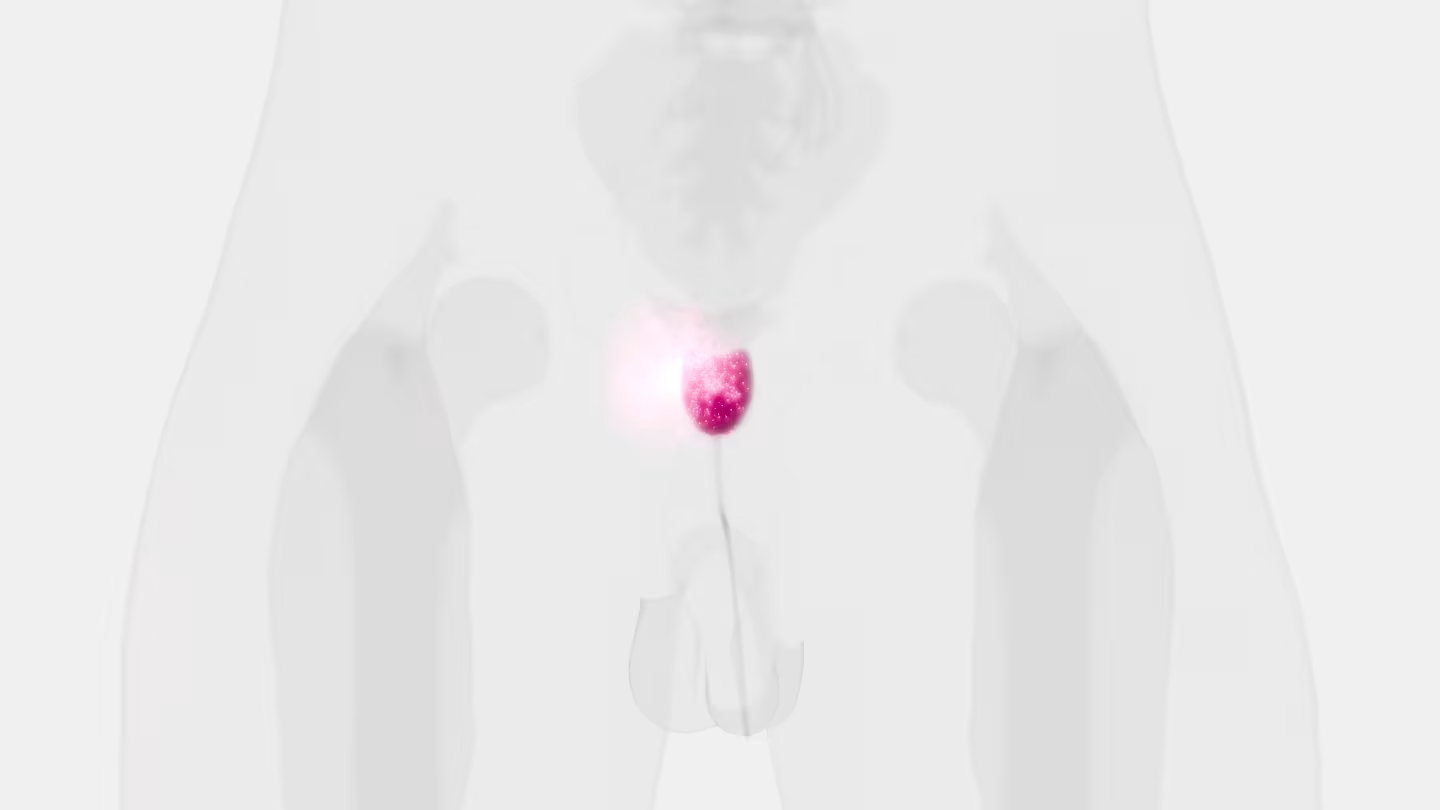Filtration-based enrichment of circulating tumor cells from all prostate cancer risk groups

Objective: To combine circulating tumor cell (CTC) isolation by filtration and immunohistochemistry to investigate the presence of CTCs in low, intermediate, and high-risk prostate cancer (PCa). CTCs isolated from these risk groups stained positive for both cytokeratin and androgen receptors, but negative for CD45.
Patients and methods: Blood samples from 41 biopsy confirmed patients with PCa at different clinical stages such as low, intermediate, and high risk were analyzed. The samples were processed with the ScreenCell filtration device and PCa CTCs were captured for all patients. The isolated CTCs were confirmed PCa CTCs by the presence of androgen receptors and cytokeratins 8, 18, and 19 that occurred in the absence of CD45 positivity. PCa CTC nuclear sizes were measured using the TeloView program.
Results: The filtration-based isolation method used permitted the measurement of the average nuclear size of the captured CTCs. CTCs were identified by immunohistochemistry in low, intermediate, and high-risk groups of patients with PCa.
Conclusion: CTCs may be found in all stages of PCa. These CTCs can be used to determine the level of genomic instability at any stage of PCa; this will, in the future, enable personalized patient
Lung cancer biopsy dislodges tumor cells into circulating blood.

Aim: A “seed” of lung cancer metastasis is circulating tumor cells (CTCs), which may be dislodged from a tumor during biopsy. This possibility was assessed among patients who underwent lung tumor biopsy using flexible fiber-topic bronchoscopy (FFB).
Methods: The study involved six patients with non-small cell lung cancer who underwent FFB biopsy to diagnose a lesion pathologically (5 males and 1 female, median age 63 years, 6 adenocarcinomas, of 4 clinical-stage IA, 1 stage IB, and 1 stage IIIA), CTCs were extracted from the peripheral vein blood at pre-FFB and at post-FFB using a size selection method.
Results: No tumor cell was detected at pre- and post-FFB was in three cases (50%); no tumor cells were detected pre-FFB while CTCs were detected at post-FFB in two cases (33.3%); and CTCs were detected at pre-FFB with numerous CTCs detected at post-FFB in one case (17.7%). In addition, similar tendencies were observed in each analysis of single-cell and clustered-cell categories.
Conclusion: These results suggest that a FFB biopsy of lung cancer may potentially dislodge CTCs from a tumor into the circulating peripheral blood.
Detection of Circulating Tumour Cells and Survival of Patients with Non-small Cell Lung Cancer

Background: Detection of circulating tumour cells (CTCs) in the peripheral blood of lung cancer patients may predict survival. Various platforms exist that allow capture of these cells for further analysis; little work however, has been done with the ScreenCell device, an antibody-independent CTC platform. The aim of our study was to evaluate the ScreenCell device for detection of CTCs in lung cancer patients and to establish correlations of these findings with survival. Materials and Methods: Twenty-three patients, nine males, and fourteen females, underwent surgical treatment from February to May 2014 for non-small cell lung cancer. Thirteen patients had adenocarcinoma and ten squamous cell carcinoma, while eight were at an early stage (I-II) and five at a later stage (III-IV). Blood samples were obtained prior to surgery and following filtration through the ScreenCell device, were independently reviewed by 2 consultant pathologists. Results: The pathologists were able to independently identify CTCs in 78.3% (N=18) and 73.9% (N=17) of the cases examined, with overall 80.6% in early stages compared to 60.0% in late stages. The median survival times of positive vs. negative for CTC patients were 1011 and 711 days respectively, with a survival percentage rate of 77.8% and 60% in positive and negative CTC cohorts respectively. Conclusion: The results of this study suggest that the presence of CTCs analyzed by ScreenCell did not necessarily lead to a poorer prognosis in patients with lung cancer after curative surgery.
Detection and Characterization of Circulating Tumor Associated Cells in Metastatic Breast Cancer

The availability of blood-based diagnostic testing using a non-invasive technique holds promise for real-time monitoring of disease progression and treatment selection. Circulating tumor cells (CTCs) have been used as a prognostic biomarker for the metastatic breast cancer (MBC). The molecular characterization of CTCs is fundamental to the phenotypic identification of malignant cells and description of the relevant genetic alterations that may change according to disease progression and therapy resistance. However, the molecular characterization of CTCs remains a challenge because of the rarity and heterogeneity of CTCs and technological difficulties in the enrichment, isolation and molecular characterization of CTCs. In this pilot study, we evaluated circulating tumor associated cells in one blood draw by size exclusion technology and cytological analysis. Among 30 prospectively enrolled MBC patients, CTCs, circulating tumor cell clusters (CTC clusters), CTCs of epithelial-mesenchymal transition (EMT) and cancer associated macrophage-like cells (CAMLs) were detected and analyzed. For molecular characterization of CTCs, size-exclusion method for CTC enrichment was tested in combination with DEPArray™ technology, which allows the recovery of single CTCs or pools of CTCs as a pure CTC sample for mutation analysis. Genomic mutations of TP53 and ESR1 were analyzed by targeted sequencing on isolated 7 CTCs from a patient with MBC. The results of genomic analysis showed heterozygous TP53 R248W mutation from one single CTC and pools of three CTCs, and homozygous TP53 R248W mutation from one single CTC and pools of two CTCs. Wild-type ESR1 was detected in the same isolated CTCs. The results of this study reveal that size-exclusion method can be used to enrich and identify circulating tumor associated cells, and enriched CTCs were characterized for genetic alterations in MBC patients, respectively.
Impact of label-free technologies in head and neck cancer circulating tumour cells

Background: The ability to identify high risk head and neck cancer (HNC) patients with disseminated disease prior to presenting with clinically detectable metastases holds remarkable potential. A fraction of circulating tumour cells (CTCs) are invasive cancer cells which mediate metastasis by intravasation, survival and extravasation from the blood stream to metastatic sites. CTCs have been cleared by the FDA for use as surrogate markers of overall survival and progression free survival for breast, prostate and colorectal cancers using the CellSearch® system. However, the clinical significance of CTCs in head and neck cancer patients has yet to be determined. There has been a significant shift in CTC enrichment platforms, away from exclusively single marker selection, to epitope-independent systems.
Methods: The aim of this study was to screen advanced stage HNC patients by the CellSearch® platform and utilise two other epitope-independent approaches, ScreenCell® (microfiltration device) and RosetteSep™ (negative enrichment), to determine how a shift to such methodologies would enable CTC enrichment and detection.
Results: In advanced stage HNC patients, single CTCs were detected in 8/43 (18.6%) on CellSearch®, 13/28 (46.4%) on ScreenCell® and 16/25 (64.0%) by RosetteSep™ (the latter could also detect CTC clusters). Notably, in patients with suspicious lung nodules, too small to biopsy, CTCs were found upon presentation. Moreover, CTCs were readily detected in advanced stage HNC patients.
Conclusion: The epitope-independent platforms detected higher CTC numbers and clusters. Further studies are needed to ascertain whether CTCs can be used as independent prognostic markers for HNCs.
Droplet digital PCR of circulating tumor cells from colorectal cancer patients can predict KRAS mutations before surgery

In colorectal cancer (CRC), KRAS mutations are a strong negative predictor for treatment with the EGFR-targeted antibodies cetuximab and panitumumab. Since it can be difficult to obtain appropriate tumor tissues for KRAS genotyping, alternative methods are required. Circulating tumor cells (CTCs) are believed to be representative of the tumor in real time. In this study we explored the capacity of a size-based device for capturing CTCs coupled with a multiplex KRAS screening assay using droplet digital PCR (ddPCR). We showed that it is possible to detect a mutant ratio of 0.05% and less than one KRAS mutant cell per mL total blood with ddPCR compared to about 0.5% and 50–75 cells for TaqMeltPCR and HRM. Next, CTCs were isolated from the blood of 35 patients with CRC at various stage of the disease. KRAS genotyping was successful for 86% (30/35) of samples with a KRAS codon 12/13 mutant ratio of 57% (17/30). In contrast, only one patient was identified as KRAS mutant when size-based isolation was combined with HRM or TaqMeltPCR. KRAS status was then determined for the 26 available formalin-fixed paraffin-embedded tumors using standard procedures. The concordance between the CTCs and the corresponding tumor tissues was 77% with a sensitivity of 83%. Taken together, the data presented here suggest that is feasible to detect KRAS mutations in CTCs from blood samples of CRC patients which are predictive for those found in the tumor. The minimal invasive nature of this procedure in combination with the high sensitivity of ddPCR might provide in the future an opportunity to monitor patients throughout the course of disease on multiple levels including early detection, prognosis, treatment and relapse as well as to obtain mechanistic insight with respect to tumor invasion and metastasis.
KRAS mutations in pancreatic circulating tumor cells: a pilot study

Pancreatic ductal adenocarcinoma (PDAC) is most often diagnosed in a metastatic stage. Circulating tumor cells (CTC) in the blood are hypothesized as the means of systemic dissemination. We aimed to isolate and characterize CTC to evaluate their significance as prognostic markers in PDAC. Blood obtained from healthy donors and patients with PDAC before therapy was filtered with ScreenCell® filtration devices for size-based CTC isolation. Captured cells were analyzed by immunofluorescence for an epithelial to mesenchymal transition (EMT) marker (zinc finger E-box binding homebox 1 (ZEB1)) and an epithelial antigen (cytokeratin (CK)). Molecular analysis of parallel specimens evaluated the KRAS mutation status of the CTC. The survival of each patient after study was recorded. As demonstrated by either cytology or finding of a KRAS mutation, CTC were detected in 18 of 21 patients (86 %) with proven PDAC: 8 out of 10 patients (80 %) with early stage (UICC IIA/IIB) and 10 out of 11 (91 %) with late stage (UICC III/IV) disease. CTC were not found in any of the 10 control patients (p < 0.001). The presence of CTC did not adversely affect median survival: 16 months in CTC-positive (n = 18) vs. 10 months in CTC-negative (n = 3) patients. Neither ZEB1 nor cytological characteristics correlated with overall survival, although ZEB1 was found almost exclusively in CTC of patients with established metastases. Patients with a CTC KRAS mutation (CTC-KRAS mut) had a substantially better survival, 19.4 vs. 7.4 months than patients with wild type KRAS (p = 0.015). With ScreenCell filtration, CTC are commonly found in PDAC (86 %). Molecular and genetic characterization, including mutations such as KRAS, may prove useful for prognosis.
Did circulating tumor cells tell us all they could? The missed circulating tumor cell message in breast cancer

Purpose: To compare circulating tumor cell (CTC) detection rates in patients with early (M0) and metastatic (M+) breast cancer using 2 positive-selection methods or size-based unbiased enrichment.
Methods: Blood collected at baseline and at different times during treatment from M0 patients undergoing neoadjuvant therapy and from M+ women starting a new line of treatment was processed in parallel using AdnaTest EMT-1/ and EMT-2/Stem CellSelect/Detect kits or ScreenCell Cyto devices. CTC positivity was defined according to the suggested cutoffs and cytological parameters, respectively.
Results: Higher CTC detection rates were obtained with the AdnaTest approach when using for CTC-enrichment antibodies against ERBB2 and EGFR in addition to MUC1 and the classical epithelial surface marker EPCAM (13% vs. 48%). In M0 patients mainly, CTC positivity rates further increased when EMT- and stemness-related marker expression (PIK3CA, AKT2 and ALDH1) was evaluated in addition to EPCAM, MUC1 and ERBB2. When the physical properties of tumor cells were exploited, CTCs were detected at higher percentages than with positive-selection-based methods, without any difference between clinical stages (78% in M0 vs. 72% in M+ cases at baseline). Circulating tumor microemboli (CTMs) were detected in addition to single CTCs with significantly higher frequency in M0 than M+ samples (78% vs. 27%, p = 0.0002).
Conclusions: Different approaches for CTC detection probably identify distinct tumor cell subpopulations, but need technical standardization before their clinical validity and biological specificity may be adequately investigated. The distinct role of CTMs compared with CTCs as prognostic and predictive biomarkers represents a further challenge.
Circulating Epithelial Cells in Patients with Pancreatic Lesions: Clinical and Pathologic Findings

Background
Circulating epithelial cell (CEC) isolation has provided diagnostic and prognostic information for a variety of cancers, previously supporting their identity as circulating tumor cells in the literature. However, we report CEC findings in patients with benign, premalignant, and malignant pancreatic lesions using a size-selective filtration device.
Study Design
Peripheral blood samples were drawn from patients found to have pancreatic lesions on preoperative imaging at a surgical clinic. Blood was filtered using ScreenCell devices, which were evaluated microscopically by a pancreatic cytopathologist. Pathologic data and clinical outcomes of these patients were obtained from medical records during a 1-year follow-up period.
Results
Nine healthy volunteers formed the control group and were found to be negative for CECs. There were 179 patients with pancreatic lesions that formed the study cohort. Circulating epithelial cells were morphologically similar in patients with a variety of pancreatic lesions. Specifically, CECs were identified in 51 of 105 pancreatic ductal adenocarcinomas (49%), 7 of 11 neuroendocrine tumors (64%), 13 of 21 intraductal papillary mucinous neoplasms (62%), and 6 of 13 patients with chronic pancreatitis. Rates of CEC identification were similar in patients with benign, premalignant, and malignant lesions (p = 0.41). In addition, CEC findings in pancreatic ductal adenocarcinoma patients were not associated with poor prognosis.
Conclusions
Although CECs were not identified in healthy volunteers, they were identified in patients with benign, premalignant, and malignant pancreatic lesions. The presence of CECs in patients presenting with pancreatic lesions is neither diagnostic of malignancy nor prognostic for patients with pancreatic ductal adenocarcinoma. »
Prevalence and number of circulating tumour cells and microemboli at diagnosis of advanced NSCLC

Purpose
Timing and magnitude of blood release of circulating tumour cells (CTC) and circulating tumour microemboli (CTM) from primary solid cancers are uncertain. We investigated prevalence and number of CTC and CTM at diagnosis of advanced non-small cell lung cancer (NSCLC).
Methods
Twenty-eight consecutive patients with suspected stage III–IV lung cancer gave consent to provide 15 mL of peripheral blood soon before diagnostic CT-guided fine-needle aspiration biopsy (FNAB). CTC and CTM (clusters of ≥3 CTC) were isolated by cell size filtration (ScreenCell), identified and counted by cytopathologists using morphometric criteria and (in 6 cases) immunostained for vimentin.
Results
FNAB demonstrated NSCLC in 26 cases. At least one CTC/3 mL blood (mean 6.8 ± 3.7) was detected in 17 (65 %) and one CTM (mean 4.5 ± 3.3) in 15 (58 %) of 26 NSCLC cases. No correlation between number of CTC or CTM and tumour type or stage was observed. Neoplastic cells from both FNA and CTC/CTM were positive for vimentin but heterogeneously.
Conclusions
CTC can be detected in two-thirds and CTM in more than half of patients with advanced NSCLC at diagnosis. Reasons underlying lack of CTC and CTM in some advanced lung cancers deserve further investigations.